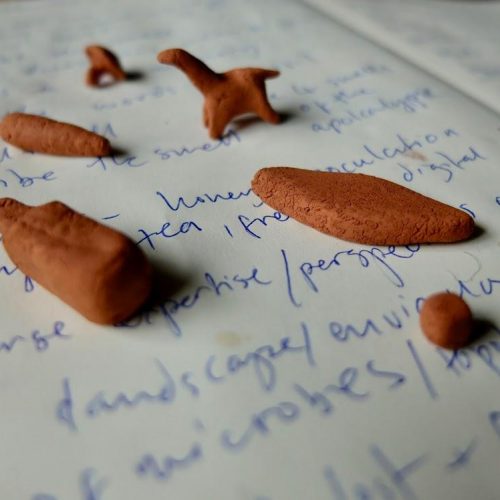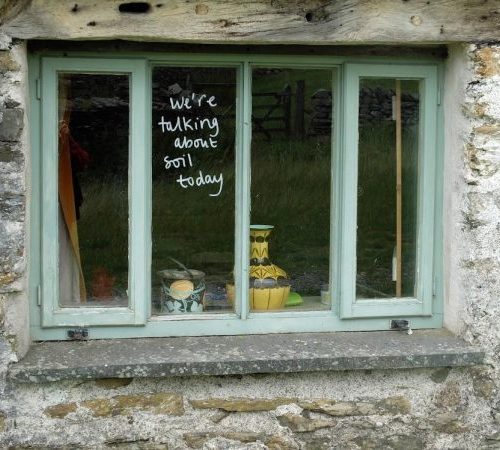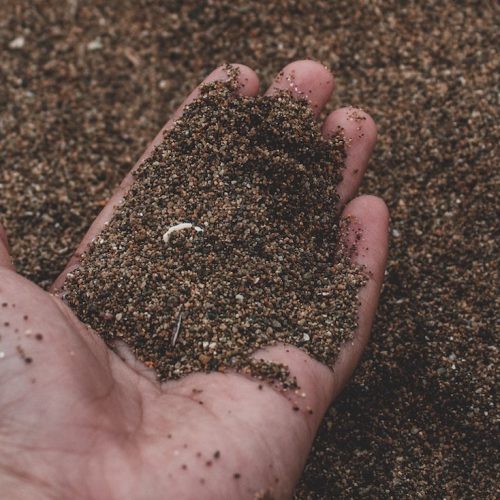#WeAreOCA
The Open College of the Arts' blog
Browsing Category:
sustainability
Art & soil: Part 2
Posted: 31/07/19 09:52 |
0 Comments
We discussed how different cultures and histories understanding of ‘good and bad soil’, before glass and microscopy developed scientific understanding of microorganisms, about mythologies of ghosts, culture and knowledge attached to the land, and more specifically compost, earth, clay, loam, silt and sand.
Read More
Speaking Soil
Posted: 24/07/19 09:35 |
0 Comments
Over three blog posts. Dan reports on his recent involvement in Grizedale Arts anniversary weekend, and a current opportunity to get involved with them. The themes of this relate to current Arts & Environment learning resources, visits and e-meets developed by Dan and Melissa for OCA.
Read More
Art in the Anthropocene
Posted: 27/06/19 09:33 |
1 Comments
The word Anthropocene combines the root “anthropo”, meaning “human” with the root “-cene”, the standard suffix for “epoch” in geologic time. Whilst the term is widely used across many discourses it is important to recognise that the term has spread with great speed often dislodging familiar terms like nature and environment. The notion of the Anthropocene raises important questions that concern the sustainability of the planet to support human life.
Read More
Study event review: Arts & environment. Part 2.
Posted: 20/05/19 09:12 |
0 Comments
These events are part of a program of Art & Environment visits taking the context of climate change as a backdrop for explorations of art, design and ecology, environment and nature.
Read More
Study event review: Arts & environment. Part 1.
Posted: 15/05/19 09:13 |
3 Comments
In our discussion about trial and error and finding the right working conditions to be able to experiment as part of the creative process, OCA student Bernadette summed it up nicely, “Lets set out to make loads of mistakes.”
Read More
Writing about other species
Posted: 18/04/19 09:40 |
8 Comments
I’m currently writing a collection of short fiction exploring our relationship with animals. When I tell people this, they often ask me if it’s a book for children, and it’s true that many classics of children’s literature feature animals: Kenneth Grahame’s The Wind in the Willows (1908), E.B. White’s Charlotte’s Web (1952) and Richard Adams’ Watership Down (1972) all spring to mind, and if you search online for animal stories, many of the results are stories for children. But thinking about and appreciating the lives of animals shouldn’t be something we associate only with children.
Read More
Arts & Environment: Part 2
Posted: 03/04/19 09:59 |
1 Comments
In this post, Dan and Melissa share recent projects and ideas informing Arts & Environment programme themes, around their involvement with Radmin and Trade Show, Bristol.
Read More
Arts & Environment events and e-meets
Posted: 27/03/19 09:03 |
2 Comments
Join Dan and Melissa on the 27 and 28 April 2019 in South London. Attend one or both days, we will be drawing outdoors, using microscopes and sharing work in progress amongst other things.
Read More
What is Ecopoetry and why write it?
Posted: 21/08/18 09:55 |
14 Comments
Eco-poetry, then, in the sense I’m talking about, takes the human and the natural world as undeniably connected and does not prioritise one over the other. The human and natural worlds are not exclusive of one another, and the natural is not something to be ‘conquered.’ Eco-poetry does not centre on a human viewpoint; it is inclusive of plant, animal, landscape. It can make us look at the experiences of the life we share the planet with in a completely new way.
Read More
Art and environment weekend in London
Posted: 29/06/18 09:57 |
4 Comments
Join OCA tutors Dan Robinson and Melissa Thompson in London on the 28 and 29 July for two days of lively summer workshops.
Read More






